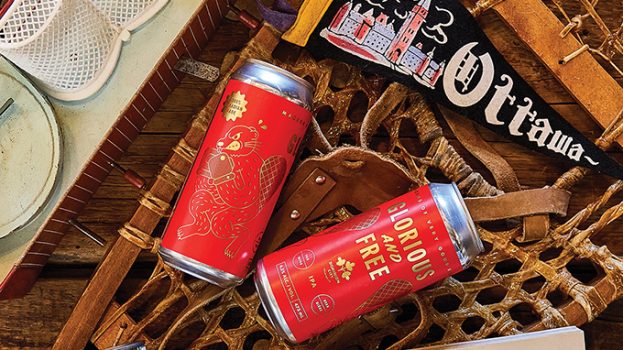In 1998, Statistics Canada found that 48% of Canadians were overweight – and that percentage is higher in some provinces. The World Health Organization recently called obesity ‘the greatest neglected public health problem of our time.’
The problem is clear and present and visible on Canadian streets every day and it’s going to drastically change the way food and beverage companies do business.
Food and beverage marketers are rightfully afraid. One Toronto exec, who asked not to be identified, compared the issue to the alcohol and tobacco megatrends, saying: ‘There is certainly a concern from a litigation point of view as well as a legislation point of view in Canada.’
‘As head of marketing, the whole health and wellness issue is my number-one opportunity,’ he adds.
And there’s the crux. Obesity is challenging to address: It links personal freedom and responsibility, parental involvement, public health and the commercial interests of many, many companies in the general food and beverage industry.
At the same time, the issue is clearly top of mind – the number of newspaper articles mentioning obesity has doubled in the last 18 months – and represents a major opportunity for companies who are able to offer smart, credible solutions to consumers who are concerned about their health and weight.
Edward Gould, managing partner at NATIONAL Public Relations in Toronto, expects PR to play a major role in a long-term, multi-pronged solution.
‘Our primary role is to monitor evolving opinion, help companies identify ways to reach out to and communicate with multiple and sometimes conflicting stakeholders and develop forward-looking strategies that deal with the shared responsibility of this critically important issue.
‘The better firms are serving as antennae and monitoring the evolving opinions of global health organizations, national and international governments, the food and beverage industries, and consumers and the financial community who are watching closely. ‘
Two major public relations tactics have already kicked in. Kraft Foods in the U.S. was the first to go into a thinly veiled damage control mode, taking the initiative to make major public announcements in July about its commitment to fighting child obesity through better labelling, smaller portion sizes and an end to in-school marketing. Unilever Bestfoods, Procter & Gamble and Heinz were quick to follow with PR initiatives of their own designed to warn Americans that too much fast food is bad for your health.
It’s no accident that Canadians chose Kraft as the most trusted brand in the food-manufacturing category in an Ipsos-Reid poll earlier this year. Category leaders take action first, and the payoff is increased consumer trust. But it’s not just the big companies that have an opportunity.
Maryse Cardin, a partner with Vancouver-based Turtle and Hare Creative, identifies an increase in communications and transparency as the single most important response that companies should be making to the crisis. As well, companies need to avoid appearing defensive when asked questions about ingredients or labeling, and proactive communications is one way to do that.
Another trusted brand, Coca-Cola, chose a different damage-control tactic. The company launched ads in the U.S. last year depicting the whole gamut of Coke beverage brands, including fruit juices and Dasani water. Pepsi took the tactic further with full-page newspaper ads announcing the variety of its Frito-Lay brand snack foods that are free of trans fats. The advertising followed a public statement from the company announcing that 50% of product innovation will be of the sensible variety over the next five years.
Emphasizing healthier alternatives in your brand portfolio wards off special interest groups who are pointing fingers, and can show that your company is more than a snack-peddler. Many companies are going further and publicly adding healthy alternatives to their current offerings – and capturing public interest as a result.
Frito-Lay Canada has taken the trouble to relaunch some of its healthier alternatives this year, including baked Doritos, Ruffles, Tostitos and Lays. The PepsiCo division also launched a whole new line of Rold Gold pretzel products, including Gold Honeywheat Braids.
Toronto-based VP marketing Dale Hooper says the company is, ‘constantly reviewing our portfolio for other sensible choices.’ In the next 12 months, it will be putting together new information and literature for consumers.
‘The whole goal is to provide choices and assist Canadians, in terms of their habits, to lead healthier and happier lives through products and education.’ Hooper says these initiatives will represent a ‘major’ part of the company’s marketing plan. One initiative already underway is a joint effort with U.S.-based Weight Watchers for the Rold Gold Braid product. Frito Lay provided Weight Watchers with detailed statistics on that brand so they could incorporate it into their diet menu.
Other companies are also launching new products designed to capture the public interest in health and nutrition while shoring up their brands.
Sleeman Breweries is somewhat tight-lipped about the new low carbohydrate beer it launched this fall. Advertising for the product has been limited, but the media has offered extensive coverage to the brand.
A poll conducted by Ipsos-Reid before the launch won major media mileage. The poll found that 93% of Canadians try to make healthy eating decisions and 35% of Canadians would try a low-carbohydrate beer. The poll, which was publicly released, also delivered detailed data on Canadian dieting and lifestyle habits, awareness of low-carbohydrate diets, and willingness to try low-carbohydrate products.
A press conference held before the launch resulted in extensive TV coverage, including business-to-consumer stories, and radio coverage with DJs announcing that they’d tried the beer and loved it. Public relations AOR Cohn & Wolfe in Toronto is now contemplating a follow-up media release updating reporters on the success of the brand.
Meanwhile in the U.S., Heinz just announced plans to launch a new low-carbohydrate alternative in the form of Heinz One Carb Ketchup, due in stores next spring. The old ketchup only had four grams of carbohydrates but already the idea of a low-carbohydrate alternative has whetted consumer appetites. The new product is in keeping with the strategy to offer ‘a bottle of ketchup for every member of the family,’ but its timeliness cannot be ignored.
Robin Teets, senior communication manager for Heinz US Consumer Products, says that media attention ‘was not the main rationale behind the product, but the fact is that there’s a lot of attention around this and, because of that, it has helped us get the word out about this product.’
The product has been mentioned in a number of media stories about obesity, Teets says. ‘We’ve gotten a fair amount of very positive consumer feedback from people.’ The feedback is more than just about products.
‘Heinz is the king of ketchup in the U.S. and around the globe,’ Teets says. ‘It’s important not just to reach into specific segments, but what we’ve found consistently, as the leader in the category, whether you go back to coloured kids condiments or an upside-down bottle, is that when you add those businesses, not only are we adding incremental trial to the mix but because we are out ahead of everyone else, we’re building a bit of a halo over the entire brand. So we do see a bit of an incremental increase in overall ketchup consumption, simply by being out there and having people talk about ketchup.’
NATIONAL’s Gould expects to see much more of this activity. He’s hosted a variety of strategic meetings with food and beverage clients in the last few months. ‘There is no quick fix. The best [PR companies] will be recommending strategic and collaborative long-term solutions.’























